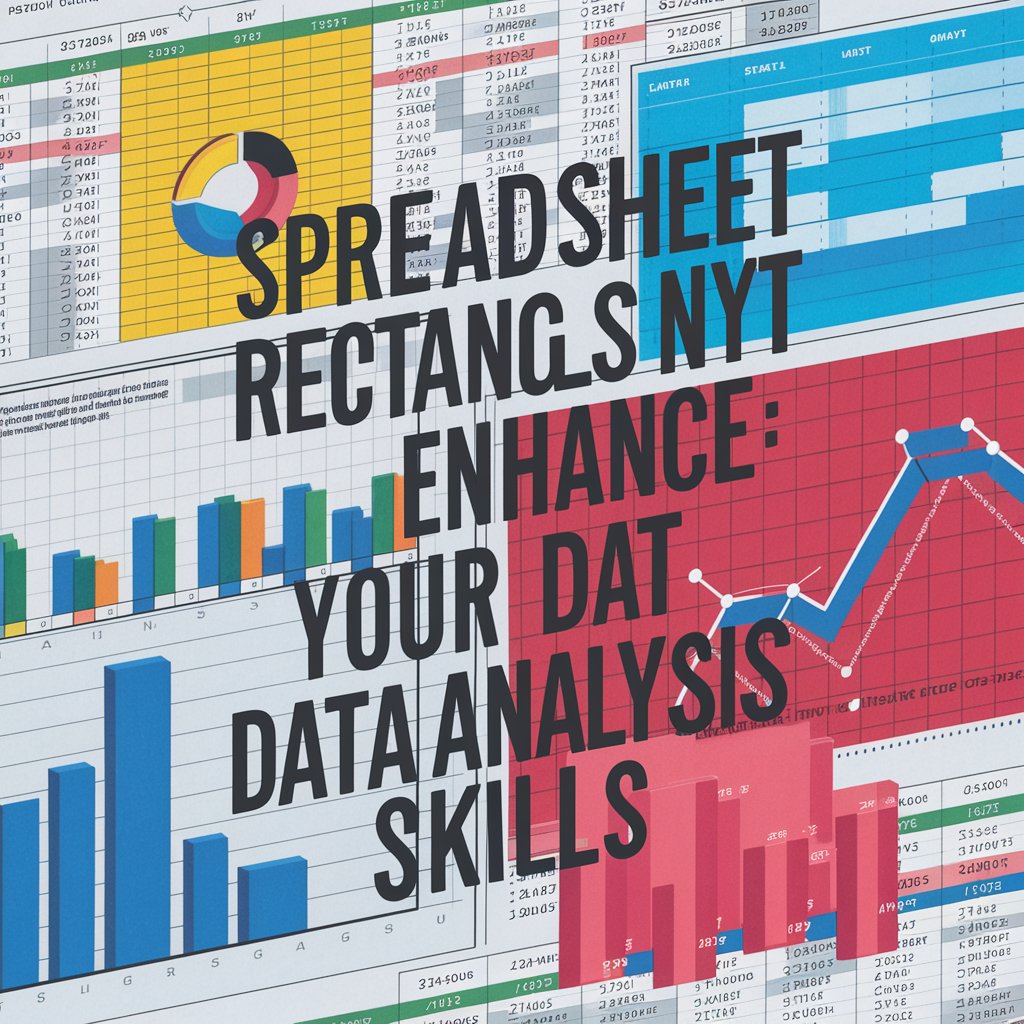The Ultimate Guide to Spreadsheet Rectangles NYT: Enhance Your Data Analysis Skills
Introduction
In the world of data analysis, spreadsheets are invaluable tools. Among the many features and functionalities available, “spreadsheet rectangles” have become a key topic of interest, particularly in the context of puzzles and data challenges featured in The New York Times (NYT). This comprehensive guide explores the concept of spreadsheet rectangles, offering expert tips and insights to elevate your data analysis skills. Whether you’re a seasoned analyst or a novice, this guide will provide you with the knowledge to effectively use spreadsheet rectangles to optimize your data manipulation and problem-solving techniques.
Discover the secrets of spreadsheet rectangles with our NYT guide. Enhance your data analysis skills using expert tips and insights to master this essential tool.
Table of Contents
- Understanding Spreadsheet Rectangles
- Definition and Importance
- Common Applications
- Overview of NYT Puzzles Involving Spreadsheet Rectangles
- How to Create and Manipulate Spreadsheet Rectangles
- Basic Techniques for Creating Rectangles
- Advanced Manipulation and Formatting
- Tools and Software for Efficient Rectangle Management
- Analyzing NYT Spreadsheet Rectangle Puzzles
- Popular NYT Spreadsheet Rectangle Puzzles
- Strategies for Solving Puzzles
- Step-by-Step Solutions and Tips
- Benefits of Mastering Spreadsheet Rectangles
- Enhancing Data Analysis Skills
- Improving Efficiency in Data Management
- Real-World Applications and Examples
- Common Challenges and Solutions
- Frequently Encountered Issues
- Troubleshooting Tips
- Best Practices for Avoiding Mistakes
- Comparing Spreadsheet Rectangles Across Different Platforms
- Excel vs. Google Sheets vs. NYT Tools
- Feature Comparisons
- Choosing the Right Tool for Your Needs
- FAQs
- What are spreadsheet rectangles and how are they used in NYT puzzles?
- How can I improve my skills in handling spreadsheet rectangles?
- What are some common mistakes to avoid when working with spreadsheet rectangles?
- Where can I find more NYT puzzles involving spreadsheet rectangles?
- Conclusion
1. Understanding Spreadsheet Rectangles
Definition and Importance
Spreadsheet rectangles refer to specific areas or blocks within a spreadsheet where data is organized in a rectangular format. These rectangles are crucial for structuring data, performing calculations, and visualizing information. They form the backbone of many data manipulation and analysis tasks, allowing users to efficiently handle and interpret large volumes of data.
Common Applications
Spreadsheet rectangles are used in various contexts, including:
- Data Tables: Organizing data into rows and columns.
- Charts and Graphs: Visualizing data trends and patterns.
- Formulas and Functions: Performing calculations across selected data ranges.
- Pivot Tables: Summarizing and analyzing complex data sets.
Overview of NYT Puzzles Involving Spreadsheet Rectangles
The New York Times often features puzzles that utilize spreadsheet rectangles as part of their challenges. These puzzles test users’ ability to navigate and manipulate data within a spreadsheet environment, providing a fun and educational way to enhance data analysis skills.
2. How to Create and Manipulate Spreadsheet Rectangles
Basic Techniques for Creating Rectangles
Creating a spreadsheet rectangle involves selecting a range of cells within a spreadsheet application. Basic steps include:
- Selecting Cells: Click and drag to highlight the desired range.
- Formatting: Apply borders, shading, or colors to delineate the rectangle.
- Data Entry: Input data or formulas into the selected range.
Advanced Manipulation and Formatting
Advanced techniques include:
- Conditional Formatting: Applying formatting based on data values.
- Merging Cells: Combining multiple cells into a single rectangle.
- Cell Referencing: Using references to perform calculations across rectangles.
Tools and Software for Efficient Rectangle Management
Popular tools and software for managing spreadsheet rectangles include:
- Microsoft Excel: Known for its powerful features and extensive functionality.
- Google Sheets: Offers cloud-based collaboration and integration.
- NYT Interactive Tools: Specific to NYT puzzles and challenges.
3. Analyzing NYT Spreadsheet Rectangle Puzzles
Popular NYT Spreadsheet Rectangle Puzzles
The NYT features a range of puzzles that incorporate spreadsheet rectangles. Some examples include:
- Data Grid Puzzles: Where users must organize and analyze data within a grid.
- Pattern Recognition Challenges: Identifying patterns and trends within rectangular data sets.
Strategies for Solving Puzzles
Effective strategies for solving these puzzles include:
- Understanding the Rules: Familiarize yourself with the specific rules of the puzzle.
- Breaking Down the Problem: Divide the puzzle into smaller, manageable parts.
- Using Tools Efficiently: Utilize spreadsheet functions and features to streamline the solution process.
Step-by-Step Solutions and Tips
This section provides detailed solutions to sample NYT puzzles, offering tips and techniques for solving similar challenges. For example:
- Analyze the Problem: Review the puzzle requirements and constraints.
- Set Up Your Spreadsheet: Organize your data into a rectangle as specified.
- Apply Formulas: Use appropriate formulas to manipulate and analyze the data.
- Verify Your Solution: Ensure that your results meet the puzzle’s criteria.
4. Benefits of Mastering Spreadsheet Rectangles
Enhancing Data Analysis Skills
Mastering spreadsheet rectangles enhances your ability to analyze and interpret data effectively. It allows you to structure data in a meaningful way, perform complex calculations, and derive insights that inform decision-making.
Improving Efficiency in Data Management
Proficiency in handling spreadsheet rectangles can significantly improve your efficiency in managing and processing data. By mastering techniques such as conditional formatting and cell referencing, you can streamline your workflows and reduce errors.
Real-World Applications and Examples
Spreadsheet rectangles have practical applications in various fields, including finance, marketing, and project management. Examples include:
- Budget Tracking: Organizing financial data into clear rectangles for analysis.
- Sales Reports: Visualizing sales performance across different regions and time periods.
- Project Timelines: Managing project tasks and deadlines using grid-based layouts.
5. Common Challenges and Solutions
Frequently Encountered Issues
Common challenges when working with spreadsheet rectangles include:
- Formatting Errors: Issues with borders, shading, or cell alignment.
- Formula Errors: Incorrect calculations or references within the rectangle.
- Data Overlap: Problems with data spilling over or misaligned cells.
Troubleshooting Tips
To address these challenges:
- Check Formatting: Ensure consistent formatting and alignment.
- Review Formulas: Double-check formula syntax and references.
- Adjust Data Range: Modify cell ranges to prevent overlap.
Best Practices for Avoiding Mistakes
- Use Templates: Utilize pre-designed templates to minimize errors.
- Validate Data: Regularly verify data accuracy and integrity.
- Stay Organized: Maintain a structured approach to data entry and analysis.
6. Comparing Spreadsheet Rectangles Across Different Platforms
Excel vs. Google Sheets vs. NYT Tools
Microsoft Excel: Offers extensive functionality and customization options for spreadsheet rectangles. Ideal for advanced data manipulation and analysis.
Google Sheets: Provides cloud-based access and collaboration features, making it suitable for team projects and real-time updates.
NYT Tools: Specialized tools used for NYT puzzles and challenges, often with unique features tailored to specific tasks.
Feature Comparisons
Compare features such as:
- Functionality: Range of available functions and formulas.
- Ease of Use: User interface and learning curve.
- Integration: Compatibility with other tools and platforms.
Choosing the Right Tool for Your Needs
Selecting the right tool depends on your specific requirements and preferences. Consider factors such as collaboration needs, advanced features, and compatibility with other software.
7. Frequently Asked Questions (FAQs)
What are spreadsheet rectangles and how are they used in NYT puzzles?
Spreadsheet rectangles are blocks of cells within a spreadsheet used for organizing and analyzing data. In NYT puzzles, they are used to test users’ skills in data manipulation and problem-solving.
How can I improve my skills in handling spreadsheet rectangles?
To improve your skills, practice using spreadsheet features, solve related puzzles, and study examples of effective data organization and analysis techniques.
What are some common mistakes to avoid when working with spreadsheet rectangles?
Common mistakes include formatting errors, incorrect formulas, and data overlap. To avoid these, ensure accurate data entry, use proper formatting, and regularly validate your results.
Where can I find more NYT puzzles involving spreadsheet rectangles?
NYT puzzles involving spreadsheet rectangles can be found on the New York Times website or through their puzzle-specific publications and interactive tools.
Conclusion
Mastering spreadsheet rectangles is essential for effective data analysis and problem-solving. This guide provides in-depth insights into creating, manipulating, and analyzing spreadsheet rectangles, with a focus on NYT puzzles. By understanding these concepts and applying the tips and techniques provided, you can enhance your data management skills and tackle challenges with confidence.






